Sibo Qiao
FedDRL: A Trustworthy Federated Learning Model Fusion Method Based on Staged Reinforcement Learning
Jul 25, 2023



Abstract:Traditional federated learning uses the number of samples to calculate the weights of each client model and uses this fixed weight value to fusion the global model. However, in practical scenarios, each client's device and data heterogeneity leads to differences in the quality of each client's model. Thus the contribution to the global model is not wholly determined by the sample size. In addition, if clients intentionally upload low-quality or malicious models, using these models for aggregation will lead to a severe decrease in global model accuracy. Traditional federated learning algorithms do not address these issues. To solve this probelm, we propose FedDRL, a model fusion approach using reinforcement learning based on a two staged approach. In the first stage, Our method could filter out malicious models and selects trusted client models to participate in the model fusion. In the second stage, the FedDRL algorithm adaptively adjusts the weights of the trusted client models and aggregates the optimal global model. We also define five model fusion scenarios and compare our method with two baseline algorithms in those scenarios. The experimental results show that our algorithm has higher reliability than other algorithms while maintaining accuracy.
IUP: An Intelligent Utility Prediction Scheme for Solid-State Fermentation in 5G IoT
Mar 28, 2021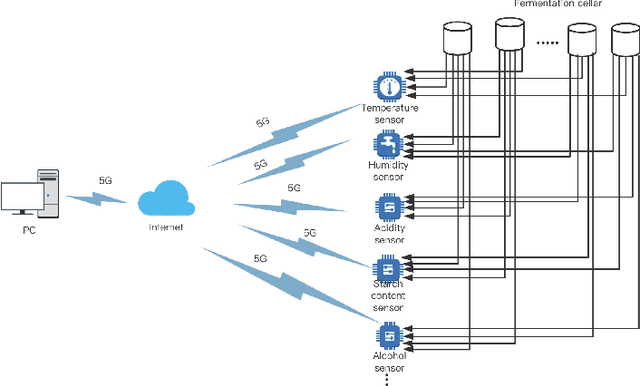
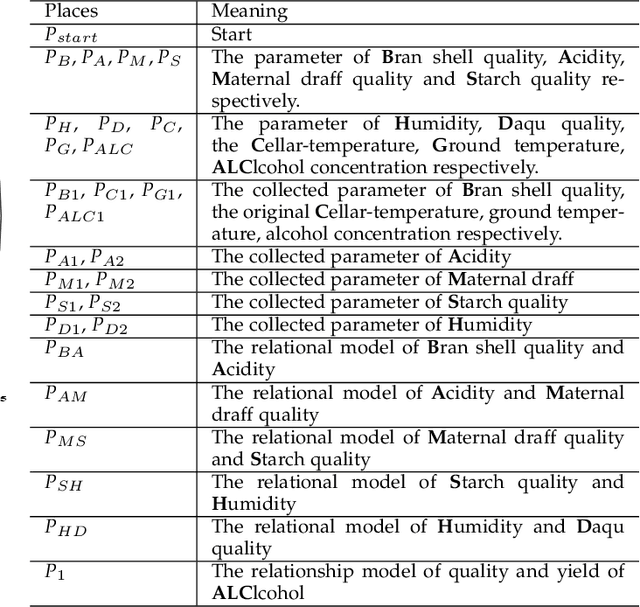
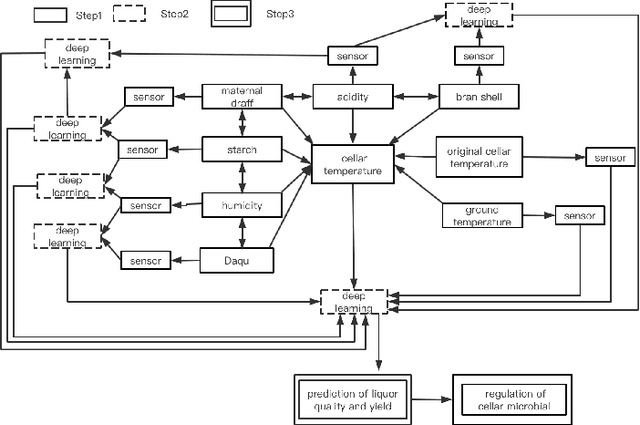

Abstract:At present, SOILD-STATE Fermentation (SSF) is mainly controlled by artificial experience, and the product quality and yield are not stable. Accurately predicting the quality and yield of SSF is of great significance for improving human food security and supply. In this paper, we propose an Intelligent Utility Prediction (IUP) scheme for SSF in 5G Industrial Internet of Things (IoT), including parameter collection and utility prediction of SSF process. This IUP scheme is based on the environmental perception and intelligent learning algorithms of the 5G Industrial IoT. We build a workflow model based on rewritable petri net to verify the correctness of the system model function and process. In addition, we design a utility prediction model for SSF based on the Generative Adversarial Networks (GAN) and Fully Connected Neural Network (FCNN). We design a GAN with constraint of mean square error (MSE-GAN) to solve the problem of few-shot learning of SSF, and then combine with the FCNN to realize the utility prediction (usually use the alcohol) of SSF. Based on the production of liquor in laboratory, the experiments show that the proposed method is more accurate than the other prediction methods in the utility prediction of SSF, and provide the basis for the numerical analysis of the proportion of preconfigured raw materials and the appropriate setting of cellar temperature.
Automatic Detection of Cardiac Chambers Using an Attention-based YOLOv4 Framework from Four-chamber View of Fetal Echocardiography
Dec 13, 2020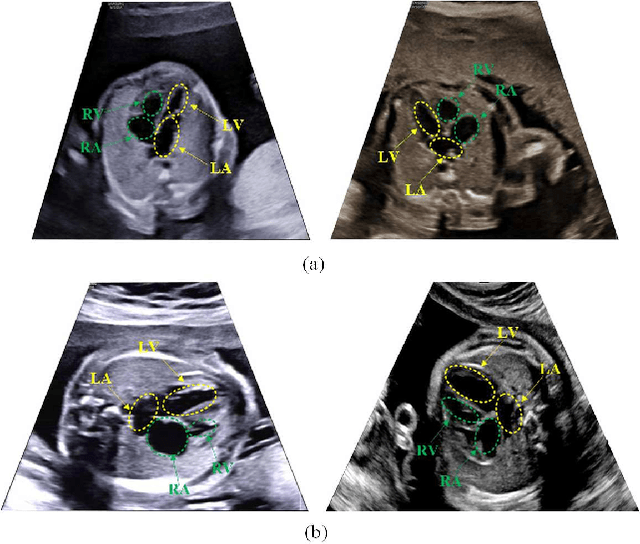
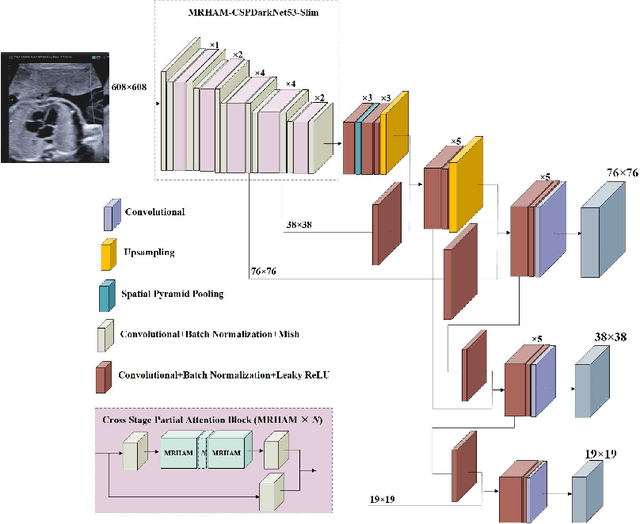
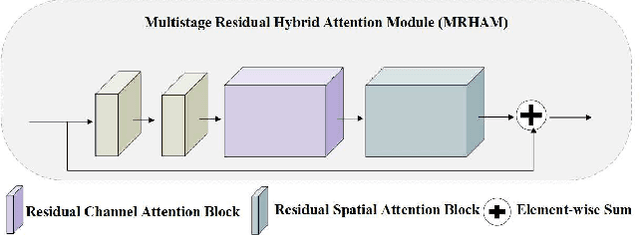
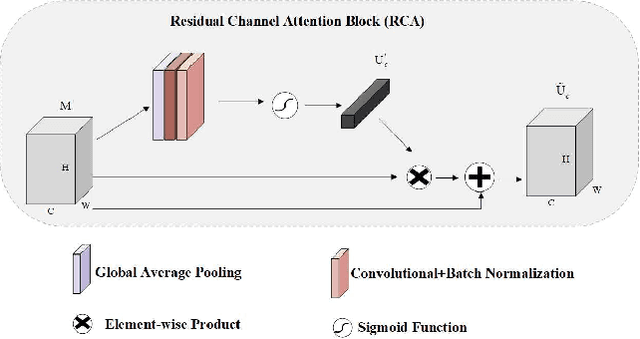
Abstract:Echocardiography is a powerful prenatal examination tool for early diagnosis of fetal congenital heart diseases (CHDs). The four-chamber (FC) view is a crucial and easily accessible ultrasound (US) image among echocardiography images. Automatic analysis of FC views contributes significantly to the early diagnosis of CHDs. The first step to automatically analyze fetal FC views is locating the fetal four crucial chambers of heart in a US image. However, it is a greatly challenging task due to several key factors, such as numerous speckles in US images, the fetal cardiac chambers with small size and unfixed positions, and category indistinction caused by the similarity of cardiac chambers. These factors hinder the process of capturing robust and discriminative features, hence destroying fetal cardiac anatomical chambers precise localization. Therefore, we first propose a multistage residual hybrid attention module (MRHAM) to improve the feature learning. Then, we present an improved YOLOv4 detection model, namely MRHAM-YOLOv4-Slim. Specially, the residual identity mapping is replaced with the MRHAM in the backbone of MRHAM-YOLOv4-Slim, accurately locating the four important chambers in fetal FC views. Extensive experiments demonstrate that our proposed method outperforms current state-of-the-art, including the precision of 0.919, the recall of 0.971, the F1 score of 0.944, the mAP of 0.953, and the frames per second (FPS) of 43.
 Add to Chrome
Add to Chrome Add to Firefox
Add to Firefox Add to Edge
Add to Edge